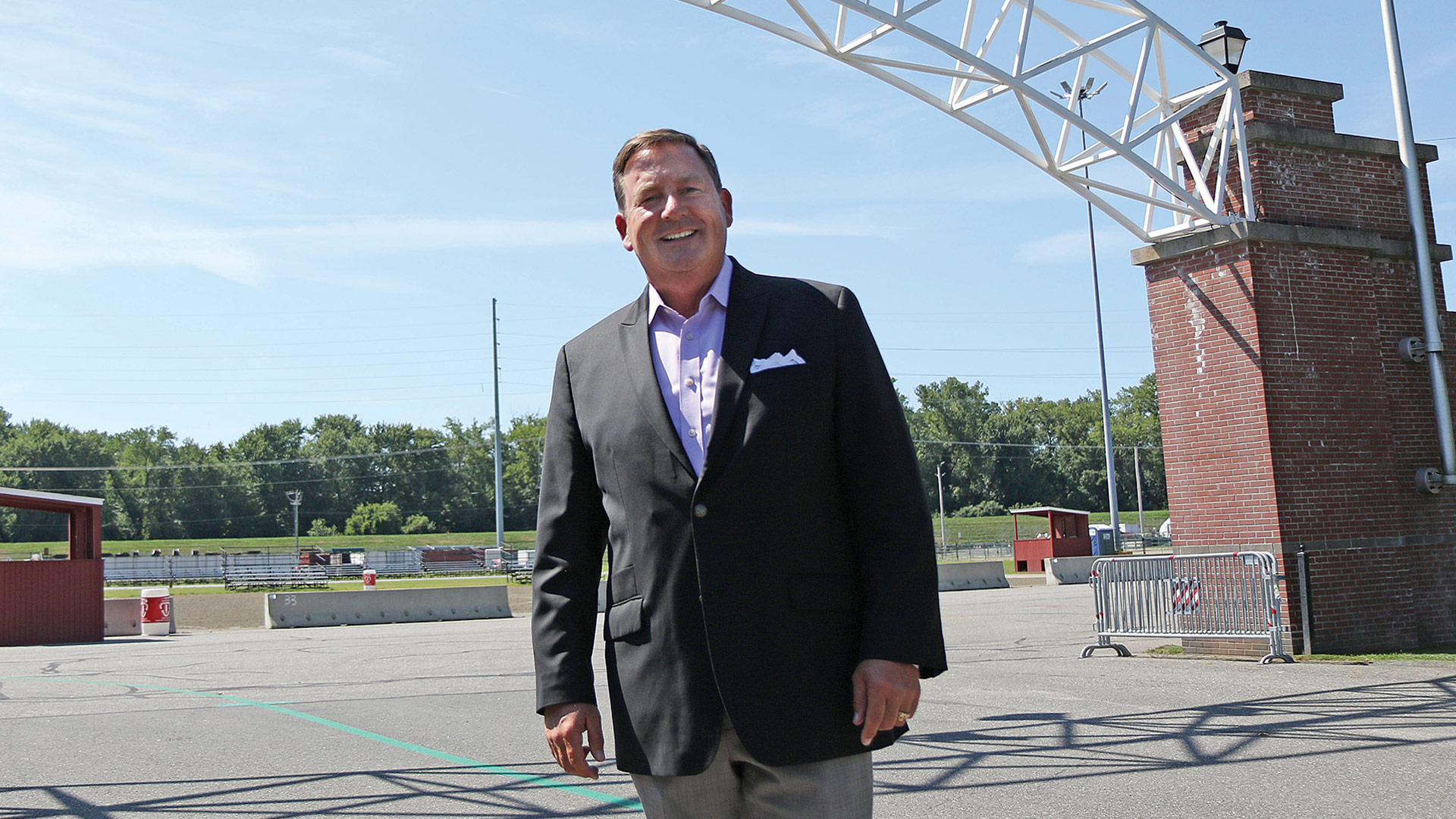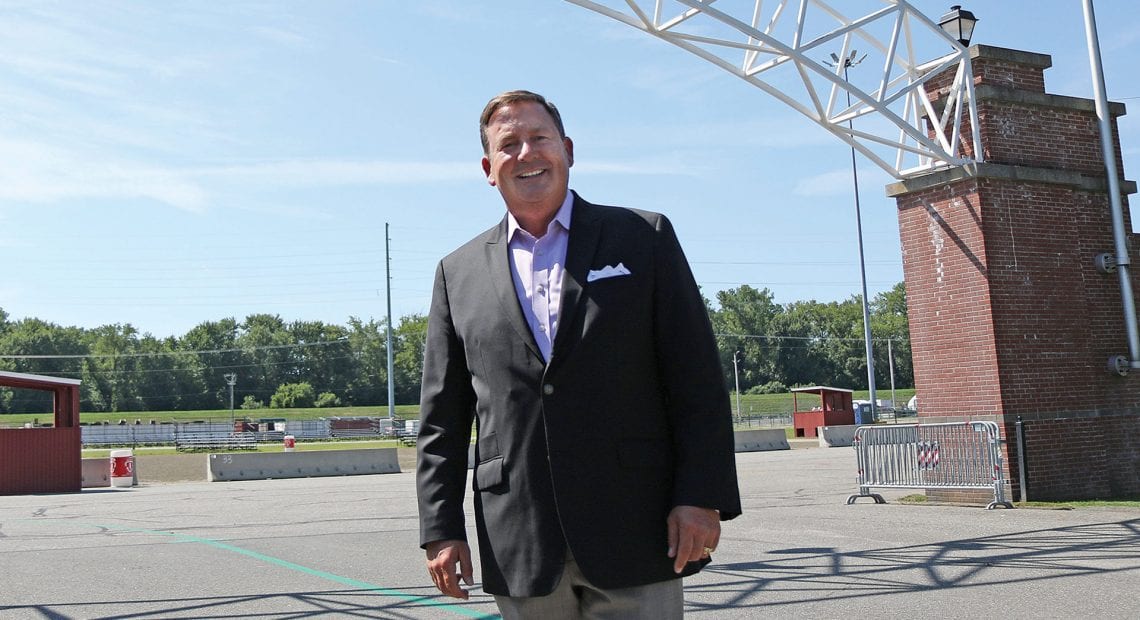Proceeding as Planned

Even if the fair goes on as scheduled, Gene Cassidy says, crowd counts could be way down.
Gene Cassidy likes to say those at the Big E ‘manufacture’ the 17-day annual fair that is by far the biggest single event on the region’s calendar.
“It’s like putting an automobile together,” he told BusinessWest. “You really can’t cut components out and expect the vehicle to run; it costs ‘X’ number of dollars to produce the fair, and we’re still going to spend that — we have to produce a fair that people are going to want to come to.”
And so, those planning the 2020 edition of the Big E are proceeding with the mindset of including all the parts that typically go into the Big E, despite the COVID-19 pandemic that is currently decimating the local economy and wiping events off the calendar in wholesale fashion.
But while Cassidy is currently certain there will be a Big E — that’s currently — he’s less certain about a great many other things. Perhaps most importantly, he doesn’t know how many people will come to the fairgrounds this September. He quoted at least one poll showing that 50% of respondents said they would not let the pandemic impact their decision to attend an event like the Big E, but another 40% said they wouldn’t attend such an event unless there was a vaccine for the virus.
And if attendance is down 20%, 30%, or even 40%? “It’s going to be a heavy lift to overcome that, but we can’t afford not to go forward.”
And if the fair should have to be canceled? That has happened a few times during the history of the fair — during World Wars I and II, to be specific — but Cassidy isn’t thinking in those terms, because the economic hit would be extremely difficult to absorb.
“I don’t want to say we’d close, but it would be a difficult, heavy lift to figure out how we would sustain ourselves so we could reopen in the future,” he told BusinessWest, adding that such a decision won’t have to be made for some time, and he is obviously hoping, and projecting, that enough progress can be made that he won’t have to take that course.
“I have confidence that we’re going to learn from this bug faster than we’ve learned from anything in the past,” he said. “And I have confidence that, by the time we get to the summer, things are going to start to loosen up; we’ve learned a lot, and we’re going to learn a great deal more — and we will open.”
As he talked about this fall’s Big E and the prospects for it, Cassidy joked that, for a change, the ongoing reconstruction of the Morgan-Sullivan Bridge, which links West and Agawam and abuts the Big E property, will not be the main topic of conversation this summer and fall.
It will still be a topic — two lanes will be closed until late summer 2021, according to the current schedule — but certainly not the topic.
“I don’t want to say we’d close, but it would be a difficult, heavy lift to figure out how we would sustain ourselves so we could reopen in the future.”
Indeed, the bridge is now largely an afterthought as the Big E and the region cope with the global pandemic and questions about both the short term and the long term that simply cannot be answered.
Already, the virus has had a huge impact on the Big E, as it has on any venue that hosts large gatherings. Searching his memory banks — and it was hard to remember back that far because so much has happened, or not happened, as the case may be — Cassidy said the last event event staged at the Big E was an antique and crafts show on March 7 and 8.
Everything since has been wiped off the calendar, including the huge home show scheduled for late in March and the planned Hooplandia, a 3-on-3 basketball festival slated to make its much-awaited debut in June.
Everything is cancelled or postponed through June, he went on, adding that he was not aware of any cancellations for July at this time. Aside from the basketball tournament, this summer was to be dominated by a number of horse shows and a few other gatherings.
But most of the attention has now shifted to the fair, which annually attracts more than 1 million people to the region and contributes more than a quarter-billion dollars to the local economy. At this point in time, the expectation is that the show will go on, said Cassidy, adding that adjustments can and will be made to help maintain the safety of visitors and employees alike.
These will come in such realms as ticketing and accessing the property, he said, adding quickly that, given the nature of fairs — putting a lot of people in very close proximity to one another as they do everything from ride on rides to eat fried dough to watch concerts — there isn’t much more that can be done to facilitate social distancing.
“The fact is … a fair is not the place where you can enforce social distancing,” he said. “We can be suggestive, but that’s not what a fair is. It’s uniquely the American way of life, and it just doesn’t lend itself to social distancing.”
These sentiments explain why there are questions — and concerns — about just how many people will make that pilgrimage to West Springfield this fall, and how many times they’ll make it.
“Citizens are going to decide how close they want to be to other people,” said Cassidy. “And I suspect that there’s a segment of society that may never return to a fair again.”
For now, those planning the fair are proceeding to ‘manufacture’ a fair like those that have come before it — but with some adjustments for the pandemic, obviously.
“We’re building a comprehensive plan for cleaning and disinfecting,” he told BusinessWest, adding that, given the fact that the Big E is an agricultural fair, it has rigorous policies in place for disinfecting the various facilities on the grounds.
Other changes will come with ticketing — there will be print-at-home ticketing, for example — as well as with access to the grounds in an effort to create some distance between people. Employees will wear masks and gloves, and visitors will be wearing masks as well, he said.
As for planning for the fair, it is, in most all respects, right on schedule.
“We’re going at the same speed as we always do,” Cassidy noted. “All the entertainment is booked; the concessionaires are lined up, although many of them are not working currently, and and I hope they can make to September. We’re going full-speed ahead — at this point, the fair is more than 90% ready to go.”
And, as noted earlier, it has all the components that the fairs have had in recent years.
“It costs us about $20 million to run the fair, and we hope to gross about $23 million or $24 million from the fair’s operation,” Cassidy noted. “We can’t produce an event that’s compromised, because people won’t come back.”
That said, one of his biggest concerns moving forward is the massive workforce needed to put on the fair, and the generational nature of that workforce.
“We have grandparents, parents, and grandchildren, all of whom participate in the workforce,” he explained. “And we have hundreds of people who volunteer at the Eastern States, many of whom are over age 65. My job is to protect my 65-year-old as well as any patrons who are in that demographic. That’s what our plan is focused on — how do we protect people who are most vulnerable?”
—George O’Brien






